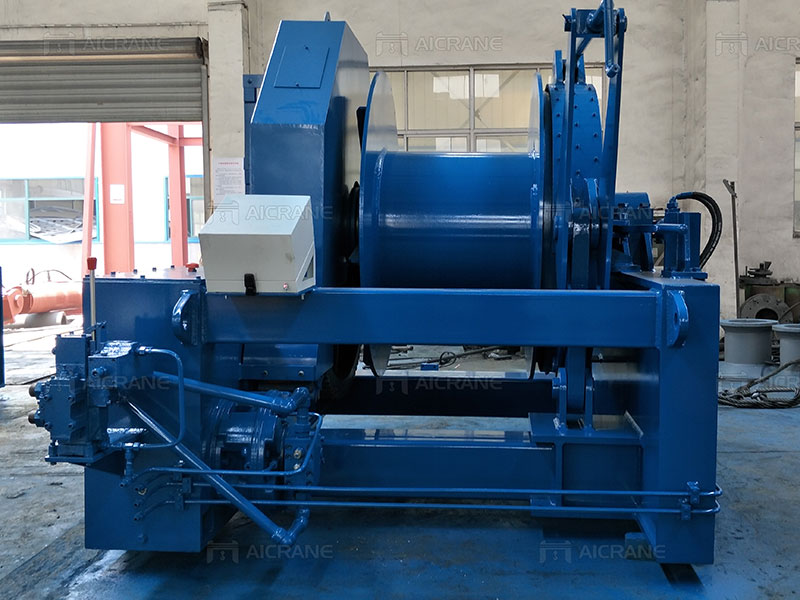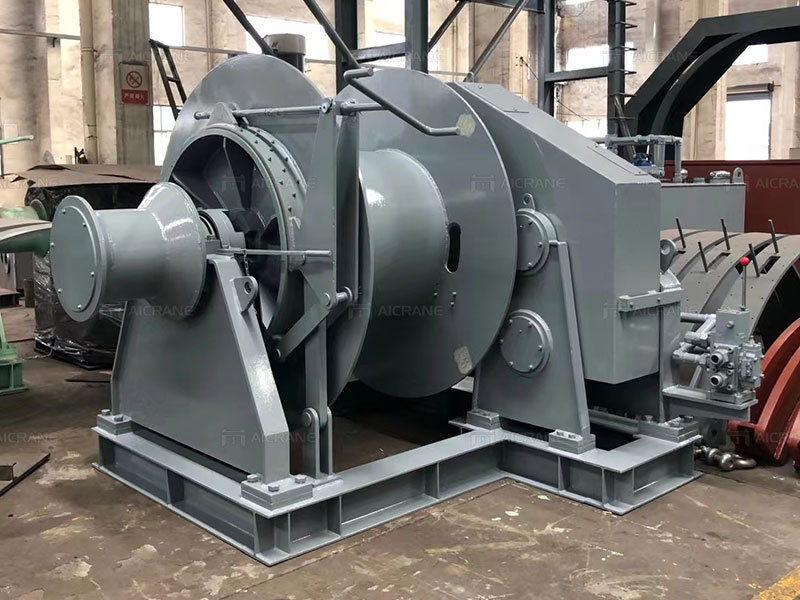Hydraulic mooring winches are vital components used in various maritime applications to secure vessels to docks or other fixed structures. These winches are designed to handle heavy loads and provide precise control during the mooring process. Proper installation is crucial to ensure the winch operates efficiently and reliably, reducing the risk of accidents and maximizing its lifespan. In this article, we will discuss essential installation tips for hydraulic mooring winches, focusing on key considerations and best practices for a successful and safe setup.
Site Assessment and Planning
Before commencing the installation of a hydraulic mooring winch, a comprehensive site assessment is necessary. Evaluate the mooring area, taking note of the available space, structural integrity of the docking area, and environmental conditions such as water depth, tidal range, and prevailing weather patterns. Proper planning will help determine the ideal winch size and capacity required for the specific mooring operation.

Selecting the Right Winch
Choosing the appropriate hydraulic mooring winch is essential for efficient and safe mooring operations. Factors to consider include the vessel’s size and weight, the required pulling capacity of the winch, the mooring line’s diameter and material, and the environmental conditions the winch will be exposed to. Ensure the selected winch is compatible with the vessel’s specifications and that it meets industry standards for safety and performance.
Foundation and Mounting
A sturdy and stable foundation is critical for the winch’s proper functioning. The mounting surface should be flat, level, and capable of handling the winch’s weight and the forces exerted during mooring. For permanent installations, secure the winch to a robust concrete foundation using anchor bolts or chemical anchors. Ensure that the winch is aligned with the intended mooring direction and that the mounting surface can absorb any vibrations during operation.
Hydraulic Power Supply
Hydraulic mooring winches require a reliable and efficient hydraulic power supply to function optimally. The hydraulic system should provide sufficient pressure and flow rate to meet the winch’s operational requirements. Properly size the hydraulic pump, reservoir, and hoses to match the winch’s power demands, taking into account potential pressure drops over distance.
Safety Considerations
Safety is of utmost importance during the installation process. Ensure that all personnel involved are adequately trained in handling hydraulic systems and mooring winch installation procedures. Provide appropriate personal protective equipment (PPE) to safeguard against potential hazards. In addition, implement safety features such as emergency stop buttons, overpressure relief valves, and fail-safe mechanisms to prevent accidents and protect personnel and equipment.

Cable and Fairlead Installation
Carefully install the mooring line or cable onto the winch drum, ensuring it is wound smoothly and evenly to avoid potential snags during operation. Implement a fairlead system to guide the cable from the winch to the mooring point, reducing wear on the cable and minimizing the risk of damage.
Electrical and Control System Integration
If the hydraulic mooring winch includes electrical components, ensure that the electrical system is integrated seamlessly with the hydraulic system. Verify that all electrical connections are secure, properly insulated, and protected against moisture and corrosion.
Testing and Commissioning
After the installation is complete, conduct thorough testing and commissioning of the hydraulic mooring winch. Check all hydraulic connections for leaks, verify the functionality of safety features, and conduct load tests to assess the winch’s performance under realistic conditions. Make any necessary adjustments or repairs before putting the winch into regular operation.
Regular Maintenance and Inspection
To ensure the longevity and reliable performance of the hydraulic mooring winch, establish a routine maintenance schedule. Regularly inspect all components, including hydraulic hoses, cables, and electrical systems. Lubricate moving parts, check for signs of wear, and promptly address any issues or potential defects.
Operator Training
Properly trained and qualified personnel should operate the hydraulic mooring winch. Offer training sessions to familiarize operators with the winch’s functionalities, safety protocols, and emergency procedures. Emphasize the importance of following manufacturer guidelines and industry best practices during mooring operations.
Conclusion
The successful installation of a hydraulic mooring winch is crucial for the smooth and safe mooring of vessels. By conducting a thorough site assessment, selecting the right marine winch, providing a robust foundation, ensuring a reliable hydraulic power supply, and implementing safety measures, operators can enhance efficiency and minimize risks during mooring operations. Regular maintenance, operator training, and adherence to best practices further contribute to the winch’s reliability and longevity. With these installation tips, hydraulic mooring winches can play a pivotal role in streamlining maritime operations and ensuring the secure mooring of vessels at docks and ports.